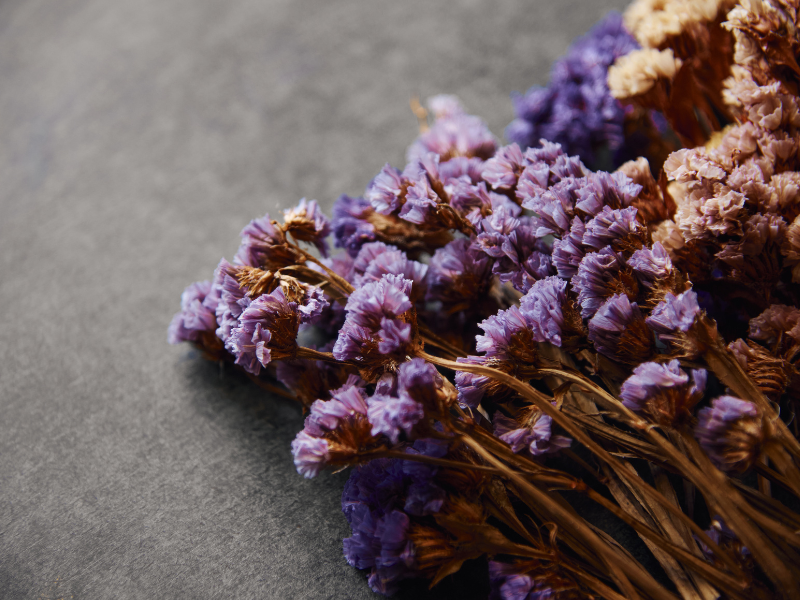
Introduction to the Dried Flower Business
The dried flower market has experienced a surge in popularity in recent years, as more people appreciate the timeless beauty and longevity of preserved blooms. In this guide, we will explore the profitability of a dried flower business and provide insights into this thriving industry. Whether you are an aspiring entrepreneur or a floral enthusiast looking to monetize your passion, this guide will shed light on the potential of the dried flower market.
Understanding the Market Demand for Dried Flowers
Before diving into the profitability of a dried flower business, it is crucial to understand the market demand. Here are some key factors to consider:
- Growing Consumer Interest: There has been a significant increase in consumer interest in sustainable and eco-friendly alternatives to fresh flowers. Dried flowers provide an excellent option, as they are long-lasting and require minimal maintenance.
- Decorative and Gift Market: Dried flowers are popular for home décor, weddings, events, and gift-giving. The versatility of dried flower arrangements appeals to a wide range of customers, creating a steady demand throughout the year.
- Online Platforms and Social Media: The rise of e-commerce and social media platforms has made it easier for dried flower businesses to reach a larger audience. Online marketplaces and social media platforms serve as effective channels to showcase and sell dried flower products.
Profit Margins in the Dried Flower Business
Profit margins in the dried flower business can vary depending on several factors. Here are some considerations:
- Cost of Materials: The cost of sourcing and processing dried flowers will affect your profit margins. Consider factors such as the availability of specific flower varieties, the cost of preserving agents, and any additional materials required for packaging and presentation.
- Value-added Services: Offering value-added services, such as custom arrangements, personalized packaging, or subscription services, can help increase your profit margins. These unique offerings differentiate your business and allow you to charge premium prices.
- Pricing Strategies: Setting the right price for your dried flower products is crucial for profitability. Consider factors such as production costs, market demand, competition, and perceived value when determining your pricing strategy.
Factors Influencing Profitability
Quality and Uniqueness of Products
The quality and uniqueness of your dried flower products play a significant role in determining profitability. Customers are willing to pay more for high-quality, well-preserved blooms and unique designs that stand out in the market. Invest in sourcing the best flowers, perfecting your preservation techniques, and developing distinct and innovative floral arrangements.
Marketing and Branding
Effective marketing and branding strategies are essential for driving sales and profitability. Develop a strong brand identity that resonates with your target audience, create compelling product descriptions and visuals, and leverage online platforms and social media to showcase your products. Building a loyal customer base and generating repeat business are key to long-term profitability.
Operational Efficiency
Streamlining your operations and managing costs effectively can significantly impact profitability. Optimize your supply chain, minimize wastage, and explore cost-saving measures without compromising on the quality of your products. Efficient inventory management and timely order fulfillment contribute to customer satisfaction and repeat sales.
Industry Trends and Seasonality
Stay abreast of industry trends and understand the seasonality of the dried flower market. Certain flowers may be more popular during specific seasons or occasions, influencing demand and pricing. Adapting to market trends and planning your inventory accordingly can help maximize profitability.
Tips for Starting a Profitable Dried Flower Business
Research and Planning
Conduct thorough market research to identify niche markets, assess competition, and understand customer preferences. Develop a comprehensive business plan that outlines your target market, marketing strategies, financial projections, and growth plans.
Quality Control and Preservation Techniques
Invest in learning and perfecting preservation techniques to ensure the quality and longevity of your dried flowers. Customers value well-preserved blooms that retain their color, shape, and fragrance. Focus on quality control throughout the drying and preservation process.
Diversify Your Product Offerings
Expand your product range beyond traditional dried flower arrangements. Consider offering related products such as potpourri, dried flower wreaths, pressed flower art, or botanical home décor items. Diversifying your offerings can attract a broader customer base and increase sales opportunities.
Build Relationships with Suppliers
Establish strong relationships with reliable suppliers to ensure a consistent and high-quality source of dried flowers. Collaborate with local flower farms, wholesalers, or international suppliers to access a wide variety of flowers and negotiate favorable pricing.
Online Presence and Marketing
Create a visually appealing and user-friendly website to showcase your products. Invest in professional product photography and write engaging product descriptions. Leverage social media platforms and online marketplaces to reach a larger audience and drive sales.
Conclusion
The dried flower business presents profitable opportunities for creative entrepreneurs who can tap into the growing market demand for sustainable and long-lasting floral products. By understanding the market, offering high-quality and unique products, and implementing effective marketing strategies, you can establish a successful and profitable dried flower business. Embrace the beauty of dried flowers and embark on a rewarding entrepreneurial journey in the floral industry.